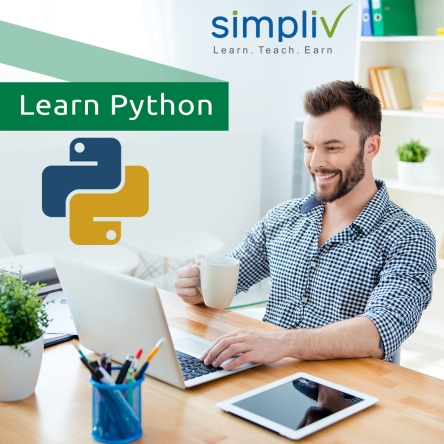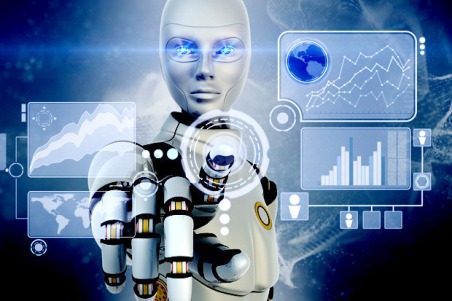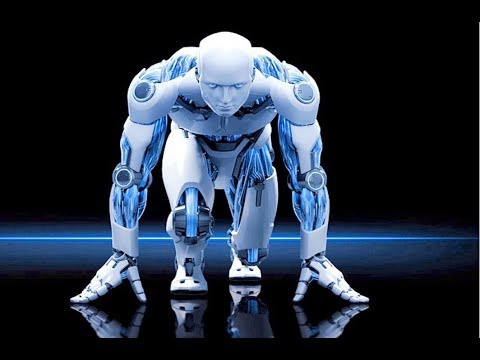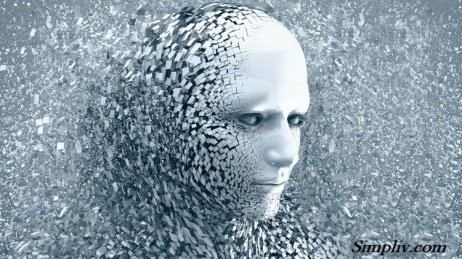Learn Python Programming

A Note on the Python versions 2 and 3: The code-alongs in this class all use Python 2.7. Source code (with copious amounts of comments) is attached as a resource with all the code-alongs. The source code has been provided for both Python 2 and Python 3 wherever possible.
What’s Covered:
- Introductory Python: Functional language constructs; Python syntax; Lists, dictionaries, functions and function objects; Lambda functions; iterators, exceptions and file-handling
- Database operations: Just as much database knowledge as you need to do data manipulation in Python
- Auto-generating spreadsheets: Kill the drudgery of reporting tasks with xlsxwriter; automated reports that combine database operations with spreadsheet auto-generation
- Text processing and NLP: Python’s powerful tools for text processing – nltk and others.
- Website scraping using Beautiful Soup: Scrapers for the New York Times and Washington Post
- Machine Learning : Use sk-learn to apply machine learning techniques like KMeans clustering
- Hundreds of lines of code with hundreds of lines of comments
- Drill #1: Download a zip file from the National Stock Exchange of India; unzip and process to find the 3 most actively traded securities for the day
- Drill #2: Store stock-exchange time-series data for 3 years in a database. On-demand, generate a report with a time-series for a given stock ticker
- Drill #3: Scrape a news article URL and auto-summarize into 3 sentences
- Drill #4: Scrape newspapers and a blog and apply several machine learning techniques – classification and clustering to these
Spark for Data Science with Python

Taught by a 4 person team including 2 Stanford-educated, ex-Googlers and 2 ex-Flipkart Lead Analysts. This team has decades of practical experience in working with Java and with billions of rows of data.
Get your data to fly using Spark for analytics, machine learning and data science
Let’s parse that.
- What’s Spark? If you are an analyst or a data scientist, you’re used to having multiple systems for working with data. SQL, Python, R, Java, etc. With Spark, you have a single engine where you can explore and play with large amounts of data, run machine learning algorithms and then use the same system to productionize your code.
- Analytics: Using Spark and Python you can analyze and explore your data in an interactive environment with fast feedback. The course will show how to leverage the power of RDDs and Dataframes to manipulate data with ease.
- Machine Learning and Data Science : Spark’s core functionality and built-in libraries make it easy to implement complex algorithms like Recommendations with very few lines of code. We’ll cover a variety of datasets and algorithms including PageRank, MapReduce and Graph datasets.
Machine Learning, NLP & Python-Cut to the Chase

Prerequisites: No prerequisites, knowledge of some undergraduate level mathematics would help but is not mandatory. Working knowledge of Python would be helpful if you want to run the source code that is provided.
Taught by a Stanford-educated, ex-Googler and an IIT, IIM – educated ex-Flipkart lead analyst. This team has decades of practical experience in quant trading, analytics and e-commerce.
This course is a down-to-earth, shy but confident take on machine learning techniques that you can put to work today
Let’s parse that.
The course is down-to-earth : it makes everything as simple as possible – but not simpler
The course is shy but confident : It is authoritative, drawn from decades of practical experience -but shies away from needlessly complicating stuff.
You can put ML to work today : If Machine Learning is a car, this car will have you driving today. It won’t tell you what the carburetor is.
The course is very visual : most of the techniques are explained with the help of animations to help you understand better.
This course is practical as well : There are hundreds of lines of source code with comments that can be used directly to implement natural language processing and machine learning for text summarization, text classification in Python.
The course is also quirky. The examples are irreverent. Lots of little touches: repetition, zooming out so we remember the big picture, active learning with plenty of quizzes. There’s also a peppy soundtrack, and art – all shown by studies to improve cognition and recall.
Image Processing Applications on Raspberry Pi – From Scratch

Image Processing Applications on Raspberry Pi is a beginner course on the newly launched Raspberry Pi 3 and is fully compatible with Raspberry Pi 2 and Raspberry Pi Zero.
The course is ideal for those who are new to the Raspberry Pi and want to explore more about it.
You will learn the components of Raspberry Pi, connecting components to Raspberry Pi, installation of NOOBS operating system, basic Linux commands, Python programming and building Image Processing applications on Raspberry Pi.
This course will take beginners without any coding skills to a level where they can write their own programs.
Basics of Python programming language are well covered in the course.
Building Image Processing applications are taught in the simplest manner which is easy to understand.
Users can quickly learn hardware assembly and coding in Python programming for building Image Processing applications. By the end of this course, users will have enough knowledge about Raspberry Pi, its components, basic Python programming, and execution of Image Processing applications in the real time scenario.
The course is taught by an expert team of Electronics and Computer Science engineers, having PhD and Postdoctoral research experience in Image Processing.
Anyone can take this course. No engineering knowledge is expected. Tutor has explained all required engineering concepts in the simplest manner.
The course will enable you to independently build Image Processing applications using Raspberry Pi.
This course is the easiest way to learn and become familiar with the Raspberry Pi platform.
By the end of this course, users will build Image Processing applications which includes scaling and flipping images, varying brightness of images, perform bit-wise operations on images, blurring and sharpening images, thresholding, erosion and dilation, edge detection, image segmentation. User will also be able to build real-world Image Processing applications which includes real-time human face eyes nose detection, detecting cars in video, real-time object detection, human face recognition and many more.
The course provides complete code for all Image Processing applications which are compatible on Raspberry Pi 3/2/Zero.
Python for Beginners 2017

See why over 350,000 Simpliv members learn coding from Mark Lassoff and LearnToProgram.tv!
Few programming languages provide you with the flexibility and pure power of Python.
If you’re becoming a professional developer, or are early in your development career, adding the Python skill set isn’t just a resume embellishment. It’s an empowering language that will allow you to write procedural code in many types of environments and for many uses.
Python is commonly used for server side programming for complex web applications or as a middle tier language providing web services or a communication layer with larger ecommerce systems. That being said, it’s also a great language for beginners. The clear syntax makes it very easy to learn, and the powerful libraries make all types of programming possible. There are libraries for everything from games and graphics to complex mathematics to network and embedded programming.